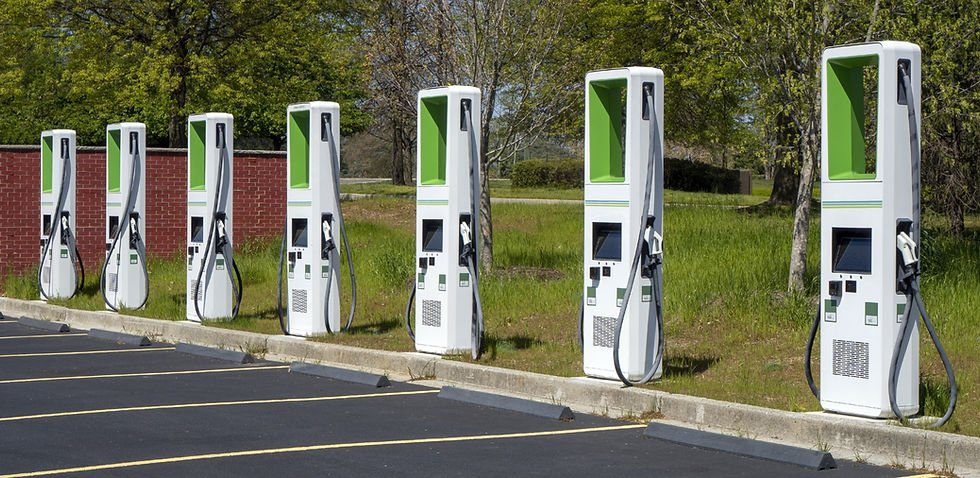Electric Vehicle (EV) Charging Stations
- andrewbdavis928
- Dec 12, 2022
- 2 min read

Electric vehicle (EV) charging stations are an essential part of the infrastructure needed to support the growing number of EVs on the road. These stations provide a convenient way for EV drivers to recharge their vehicles and are a critical component of the transition to a more sustainable transportation system.
There are two main types of EV charging stations: level 1 and level 2. Level 1 charging stations use a standard household outlet to provide a slow and steady charge to the EV battery. This charging station is suitable for overnight charging and is often used at home. Level 2 charging stations, on the other hand, use a dedicated 240-volt outlet to charge the EV battery faster. These stations are often found at public locations, such as malls and office buildings, and can provide a full charge in several hours.
One of the significant challenges facing the EV charging station industry is the need to increase the availability of charging stations. Currently, there need to be more charging stations to support the growing number of EVs on the road, making it difficult for EV drivers to find a place to recharge their vehicles. Governments and private companies are working to address this issue by building more charging stations and developing new technologies to improve charging times.
Another challenge facing the EV charging station industry is the need to improve the charging experience for EV drivers. Currently, EV charging can be a slow and inconvenient process, which can be a deterrent for some drivers. New technologies, such as wireless charging and advanced payment systems, are being developed to make EV charging more convenient and user-friendly.
Overall, the future of EV charging stations looks bright. As the demand for EVs continues to grow, so will the need for charging stations. Governments and private companies are working to address the industry's challenges, and we will likely see more and more EV charging stations in the coming years. This will help to support the transition to a more sustainable transportation system.








The expansion of electric vehicle (EV) charging stations is pivotal for the widespread adoption of EVs. From a business perspective, understanding the economic implications of EV infrastructure is crucial. For instance, studies have shown that strategically placed charging stations can boost local economies by increasing foot traffic and attracting customers. As someone preparing for a Business studies exam, I found that exploring the financial aspects of EV charging infrastructure provided valuable insights. Additionally, platforms like Take My Online Exam Pro offer support for students aiming to grasp complex topics, ensuring a comprehensive understanding of such subjects.
Very clear and helpful guidance! birth injury attorney near me
PhDResearchProposal offers expert support from experienced academic writers who specialize in crafting strong, well-structured, and phd proposal help proposals. From topic selection to final edits, they help ensure your proposal meets academic standards and boosts your chances of acceptance.
White Fox UK offers clothes that are not only stylish but also very comfy. First of all, the hoodies feel super soft and fit nicely. Also, the designs are simple but still look cool. Because of that, you can wear them every day. Moreover, the fabric stays good after many washes. white fox uk
This blog post is a valuable resource for anyone interested in [topic]. I appreciate the effort you put into compiling this information. traductor uscis